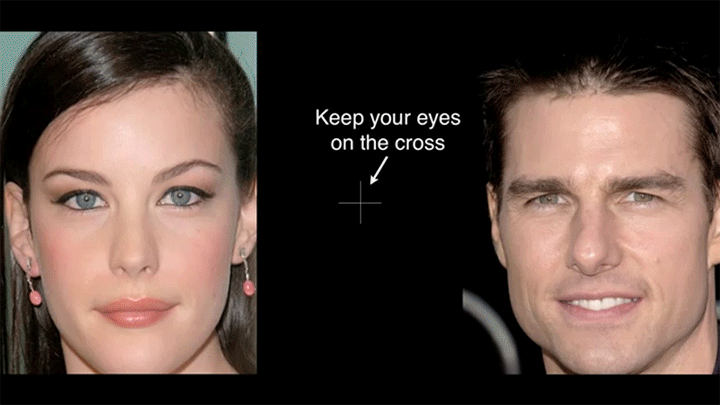I’m not sure how this works, but it is fascinating. Just stare deeply into the cross. I wonder if everyone sees the same distortion?
Herman the Merman revealed
The Horniman Merman (aka “Herman”) is a fake mummified creature believed to have originated in Japan, and now resides in London’s Horniman Museum. Its actual provenance is unknown, but likely made its way west via sailors doing business in Asia 200 years ago. In 2011, Herman was decompounded using a CT scan to reveal just what he was made of (here is a nice video going through the unveiling). Turns out Herman is made of fish (likely carp), papier mache, wood, wire and clay.
 With a face only a mudder could love, he’s not much to look at, but you have to admire the detail and artistry that went into creating this little guy.
With a face only a mudder could love, he’s not much to look at, but you have to admire the detail and artistry that went into creating this little guy.
A mind on drugs visualized
Bryan Lewis Saunders is an interesting guy. A visual artist, on March 30th 1995, he undertook to create at least one self-portrait everyday for the rest of his life. At present, he has more than 8,000. According to Saunders, “like fingerprints, snowflakes and DNA they are all different, no two are the same.” Read some of the interviews to get inside his head.
One of the more intriguing aspects of this effort is an additional phase: “After experiencing drastic changes in my environment, I looked for other experiences that might profoundly affect my perception of self. So I devised another experiment where everyday I took a different drug and drew myself under the influence. Within weeks I became lethargic and suffered mild brain damage. I am still conducting this experiment but over greater lapses of time.”
I would expect that the self-portrait he creates while under the influence is reflective of his state of mind. In which case, it is clear that many drugs do not take you to happy places. Others look fun. Here are trips on a few of the more well-known drugs:
Sun Traces Huge Figure-8 Patterns in Sky
Here is an intriguing time-lapsed photo of the sun’s position in the sky over Wroclaw, Poland, taken three-times a day throughout one year:
Maciej Zapiór, a solar physicist at the University of the Balearic Islands in Palma, Majorca, and colleague Lukasz Fajfrowski built a pinhole camera and set it to make 1-minute-long exposures onto a single piece of photographic paper at 10:30, 12:00 and 13:30 each day from 1 March 2013 to 1 March 2014. The resulting image shows how the position of the sun in the sky changes throughout the year. In the summer it is higher, in the winter lower. Its position also shifts horizontally, tracing a figure-of-eight path called an analemma.



